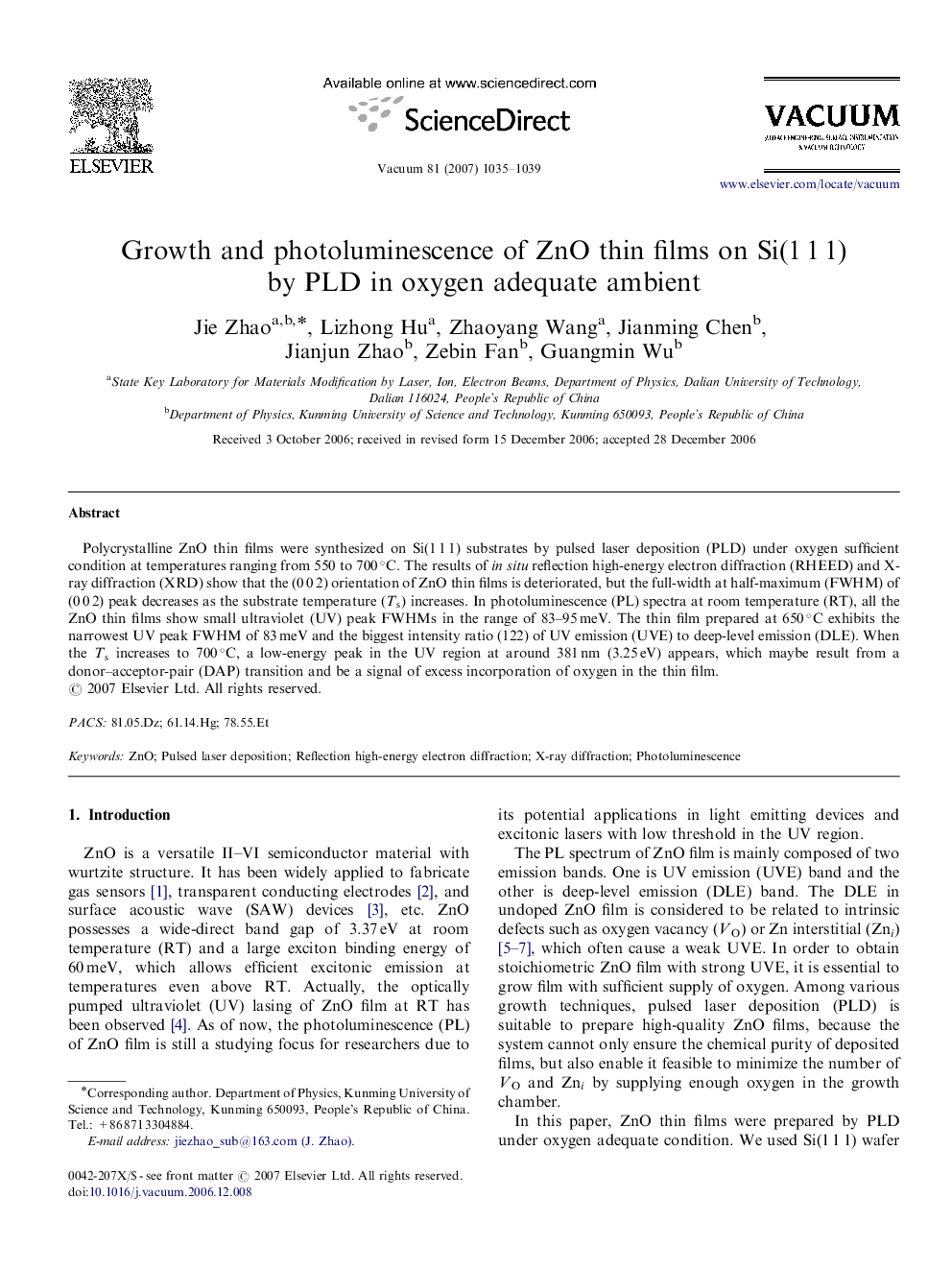| Article ID | Journal | Published Year | Pages | File Type |
|---|---|---|---|---|
| 1689475 | Vacuum | 2007 | 5 Pages |
Abstract
Polycrystalline ZnO thin films were synthesized on Si(1Â 1Â 1) substrates by pulsed laser deposition (PLD) under oxygen sufficient condition at temperatures ranging from 550 to 700âC. The results of in situ reflection high-energy electron diffraction (RHEED) and X-ray diffraction (XRD) show that the (0Â 0Â 2) orientation of ZnO thin films is deteriorated, but the full-width at half-maximum (FWHM) of (0Â 0Â 2) peak decreases as the substrate temperature (Ts) increases. In photoluminescence (PL) spectra at room temperature (RT), all the ZnO thin films show small ultraviolet (UV) peak FWHMs in the range of 83-95Â meV. The thin film prepared at 650âC exhibits the narrowest UV peak FWHM of 83Â meV and the biggest intensity ratio (122) of UV emission (UVE) to deep-level emission (DLE). When the Ts increases to 700âC, a low-energy peak in the UV region at around 381Â nm (3.25Â eV) appears, which maybe result from a donor-acceptor-pair (DAP) transition and be a signal of excess incorporation of oxygen in the thin film.
Keywords
Related Topics
Physical Sciences and Engineering
Materials Science
Surfaces, Coatings and Films
Authors
Jie Zhao, Lizhong Hu, Zhaoyang Wang, Jianming Chen, Jianjun Zhao, Zebin Fan, Guangmin Wu,
